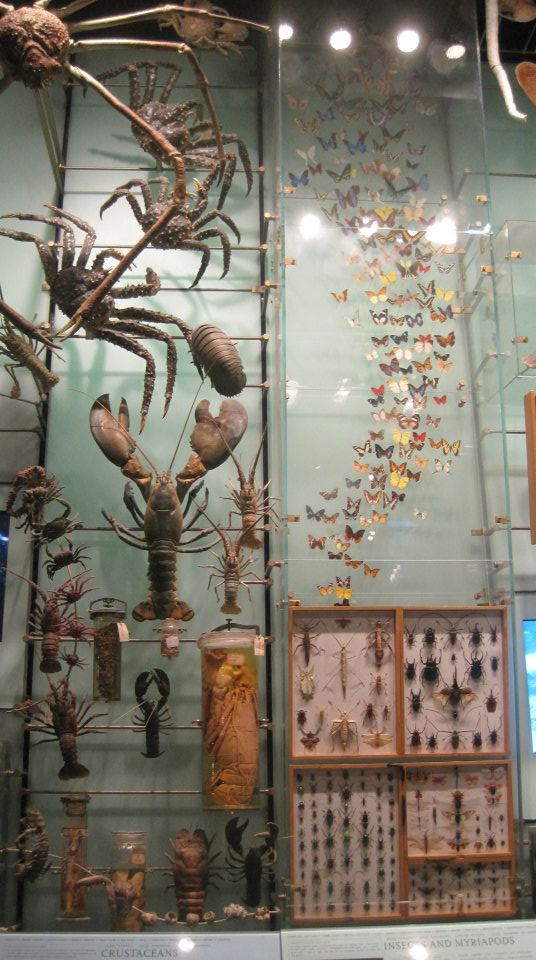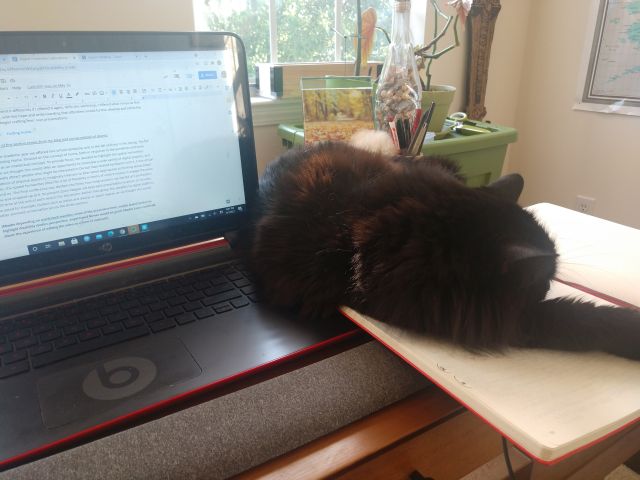In terms of dissertation work, July was a mixture of rest, resuming content-based research, and organizing my work schedule for the coming months. You already know about the rest part from my recent post on our vacation, so let’s take a look at the other two.

In terms of content I’ve been taking a closer look at the outreach exhibition activities of natural history museums. A few different leads encouraged me to pursue this particular focus. First, during an email conversation with art historian and museum studies scholar Nancy Parezo, she recommended that I take a closer look at what natural history museums were doing in terms of education and reform. Then, while I was in New York in June checking out the Met’s commemorative show on the Neighborhood Exhibition Program, I read a series of correspondence that occurred between art teacher Jessie Clough and the museum administration in 1913. In one of these letters, Clough asserted that the American Museum of Natural History had already established a precedent of sending traveling exhibits to schools, stating that if they could do it, so could the Met. Finally, I’ve always had a personal interest in natural history museums with their eclectic if problematic collections, so I decided to lean into this interest more deeply to see if there were any potential connections.
What I’ve found out so far has been pretty interesting. According to Tony Bennett’s Pasts Beyond Memory, the American Museum of Natural History did have an outreach exhibition program geared toward schools by 1903, so it does seem to have predated anything the Met was doing in terms of exhibition-related outreach. Yet this is by no means conclusive in the broader institutional sense, as these are only two museums operating in one city. While we often tend to assume that larger museums are the ones coming up with the biggest innovations, smaller institutions also drive change.

Image: Two narrow wooden boxes filled with glass lantern slides from David Gordon Lyon’s 1907 tours, part of the collection at the Harvard Museum of the Ancient Near East. Image available at Wikimedia Commons.
I’ve also been reading more about the history of photography collections within museums. More specifically, I’ve been trying to get a better sense of glass slide collections loaned out for illustrated lectures. According to the Met’s bulletin, the museum not only had an extensive lending slide collection in addition to its extension exhibitions, but the loan program for slides predated the development of outreach exhibitions. In other words, the museum loaned out slides before it started loaning out original objects. Grant it, slides and slide lectures were an established educational format, so it makes sense that museums would have been using them for didactic purposes at this time. I still find it interesting though in terms of community and institutional networking. More specifically, it makes me wonder what kinds of work these different media performed in terms of outreach, and more specifically what museums thought paintings, sculpture, and other artworks did that glass slides could not, and vice-versa (beyond the convenience of transport). Additionally, it makes me think about the affiliation between works of art and the museums that house them, as the Met’s slide collection also included images from other collections. In other words, whereas the slides were grounded in an accepted canon drawn from different museum collections, outreach exhibitions worked exclusively through the hosting museum’s own collection, two related but ultimately different objectives. It’s a bit of a rabbit hole, but I’d like to continue exploring it, not least because it provides a link back to the lantern slide lectures that were part of the mobile visual media scene at the turn of the century. And even if it is ultimately a bit of a detour, I can always use the materials for a future article (as I learned from my experience with the Howard Cook article, hang on to your research, even if it takes a few years for you to find the right opportunity for it).
Content-related research aside, I’ve also been planning out my research and writing schedule for the next couple of months. In addition to the dissertation and my ongoing exhibition work with the Barry Art Museum, I’ve got several different projects happening this coming semester. With the summer break wrapping in August, I’ll soon begin training for my new assistantship with William & Mary’s Cohen Career Center. I’m also contributing chapters to two different forthcoming anthology collections, and will be presenting at three different conferences this fall (at least one is virtual; we’ll see whether the others remain in-person or switch to an online format). In short, I’ve got a lot going on over the next few months, and to make sure I finish these obligations while having ample downtime for recharging I need to manage my time efficiently. Fortunately, the years I spent overseeing the exhibition schedule at the Roswell Museum have given my ample experience with project management, so I understand the importance of good planning.
Knowing that my activity will be picking up over the fall then, I’ve been outlining the first dissertation chapter. As fun as it is to research indefinitely, I also know that my time is finite and I need to start organizing my sources into working arguments. Last week, then, I drafted a preliminary outline stating my argument as it currently stands. This coming week I’ll start adding sources, so that when I start to write some prose, I’ll have the majority of my tentative citations in one document for easy reference. I know the chapter will continue to change and develop as I continue my research, but starting the outlining now while my various sources are still fresh will ultimately make for an easier drafting process later.
All in all, it’s been a busy few weeks, but productive ones as well. And given everything that’s going on in the world these days, that’s pretty much the best-case scenario.
